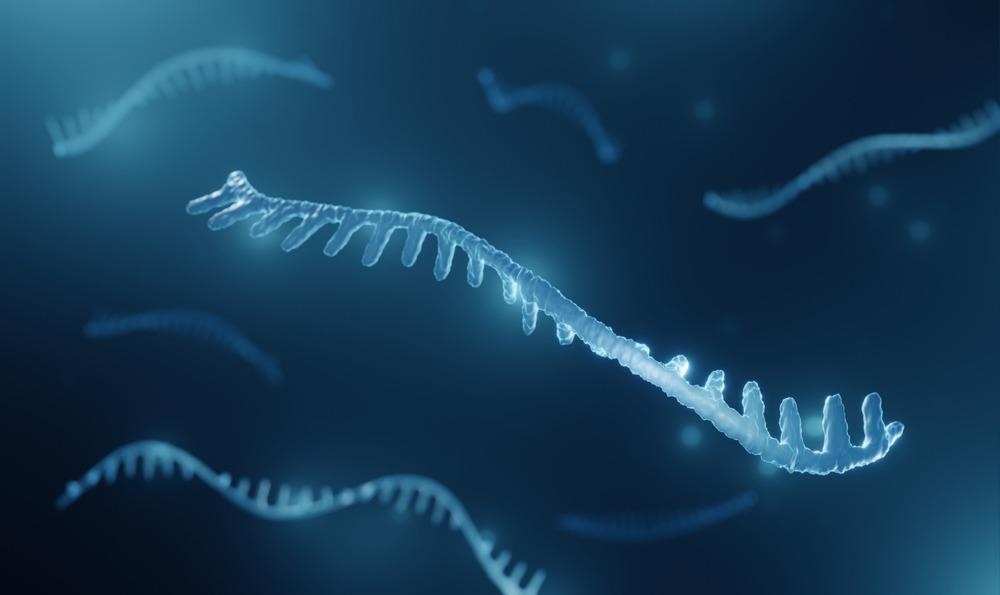A paper recently available in the Chemical Engineering Journal demonstrated the feasibility of using carbon fiber paper (CFP)-titanium carbide/MXene (Ti3C2TX)-molybdenum disulfide (MoS2) (CMM)-based electrochemical interface for multiple bioanalyses in complex biofluids.

Study: MXene-MoS2 Carbon-fiber-based Flexible Electrochemical Interface for Multiple Bioanalysis in Biofluids. Image Credit: ART-ur/Shutterstock.com
Importance of Carbon Materials for the Fabrication of Wearable Sensors
Carbon-based materials, such as carbon nanotubes and graphene, have received considerable attention for wearable sensor fabrication owing to their large specific surface area, good biocompatibility, and lightweight. Additionally, the inherent conductivity of carbon materials facilitates the fabrication of sensing platforms based on electric signals.
Significance of Electrochemical Technology for Biomarker Detection
Optical and electrochemical technologies are effective for determining biomarkers in body fluids. Specifically, electrochemical sensors could meet the requirements of wearable monitoring devices owing to their simplicity, speed, low cost, inherent miniaturization, and superior analytical performance.
Although several glass carbon electrode-based electrochemical sensors were developed to detect different biomolecules, the effectiveness was limited due to the difficulty in achieving miniaturization and portability and complex polishing steps.
Three-dimensional (3D) CFP has recently gained prominence as a flexible conductive substrate owing to its abundant electroactive sites, good flexibility, and ultrahigh conductivity. CFP is composed of carbon fibers organized in a crisscross pattern, which could be functionalized easily by other materials with superior properties to meet all performance aspects of carbon fiber composites.
Two-dimensional (2D) transition metals are used extensively to fabricate biosensors. Among them, MXene has demonstrated significant potential owing to the high specific surface area that allows nanostructures based on it to have a large effective area even within a small size.
The synthesis of MoS2-MXene heterostructure can integrate the properties of both MoS2 and MXene, leading to enhanced sensing performance. The multilayer and 2D structure of MXene-MoS2 heterostructure with a very large surface area facilitate the binding of numerous molecules and exhibit excellent structural stability, catalytic performance, electrical conductivity, and exceptional electrochemical properties.
Thus, the integration of MoS2-MXene heterostructure and flexible 3D CFP substrate can potentially lead to developing a universal flexible sensing platform for the early diagnosis of several biomarkers.
Synthesis and Evaluation of CMM-based Sensing Interface
In this study, researchers synthesized a CMM-based sensing platform and evaluated its effectiveness as a flexible electrochemical biosensing interface for the ultrasensitive detection of several biomolecules in biofluids.
Four biomolecules, including microribonucleic acid (miRNA), dopamine (DA), uric acid (UA), and ascorbic acid (AA), were used to assess the functionality of the synthesized interface.
Fabrication of MoS2/MXene Heterostructure
Initially, glucose was dissolved into deionized water to obtain a homogenous solution, and then MXene was added to the solution. The resultant solution was ultrasonicated for five minutes. Subsequently, thiourea and sodium molybdate dihydrate were added and the mixture was stirred for 30 minutes.
The mixture solution was then heated for 24 hours at 200 degrees Celsius, and the resultant product was cleaned with deionized water 3-4 times by centrifugation and vacuum-dried. Eventually, the MoS2-MXene heterostructure complex was obtained by calcining the vacuum-dried sample for four hours at 500 degrees Celsius.
Synthesis of CMM Electrode
Initially, the treated CFP was placed on a plate with a hydrophobic surface and the MXene-MoS2 composite material was coated uniformly on the CFP. Subsequently, the MXene-MoS2-coated hydrophilic CFP was dried at 37 degrees Celsius to obtain the CMM sensing electrode.
Evaluation of the Fabricated Samples
Environmental scanning electron microscopy (SEM) and an X-Ray photoelectron spectroscopy (XPS) spectrometer were used to examine the morphologies and microstructures and the chemical valence structure and element composition of the CMM electrodes, respectively. The crystal structures of the fabricated electrodes were characterized using the X-ray diffraction (XRD) method.
A CHI760E electrochemical workstation with a traditional three-electrode system containing a CFP fixed by a silver/silver chloride reference electrode, a platinum wire/counter electrode, and an electrode clamp/working electrode. Researchers also performed DA, UA, AA, and miRNA assay to evaluate the analytical performance of the CMM sensing platform and electrochemical analysis in real human urine and serum samples to assess the analysis capability of the fabricated flexible CMM interface in complex biofluids.
Significance of the Study
A multifunctional CMM sensing interface was fabricated successfully to detect multi-level biomarkers. The CMM electrochemical interface contained staggered carbon fibers on which MoS2-MXene heterostructure covered with MoS2 nanosheet arrays was coated uniformly, which allowed the local enrichment of biomolecules for higher biomolecular capture efficiency. Thus, the CMM electrode structure acted as an effective interface for the determination of miRNA, DA, UA, and AA with excellent reproducibility and sensitivity.
Specifically, extremely high sensitivity was observed while detecting miRNA. During clinical analysis, the synthesized electrochemical interface worked effectively in complex biofluids such as human urine and serum samples.
The flexible CMM interface demonstrated exceptional electrical conductivity and electrocatalytic performance. Thus, the interface can be used for simultaneous ultrasensitive detection of UA, DA, and AA with a lower detection limit and wider linear range and without further modification due to robust catalytic performance.
Based on this excellent electrochemical performance of the CMM sensing interface, capture probes were introduced by the electrodeposition of gold nanoparticles on the CMM electrode. The capture probes triggered a hybridization chain reaction and helped in achieving ultrasensitive detection of miRNA under the catalyst-driven amplification of horseradish peroxidase (HRP). The CMM-based miRNA biosensor demonstrated exceptional detection and analysis performance in clinical patient serum.
Taken together, the findings of this study demonstrated that the disposable and flexible CMM electrochemical interface could be used effectively for the determination of biomolecules in biofluids. Thus, these sensors can be potentially used in clinical applications.
Reference
Wu, W., Hu, Z., He, C. et al. (2022) MXene-MoS2 Carbon-fiber-based Flexible Electrochemical Interface for Multiple Bioanalysis in Biofluids. Chemical Engineering Journal https://www.sciencedirect.com/science/article/pii/S1385894722023361?via%3Dihub
Disclaimer: The views expressed here are those of the author expressed in their private capacity and do not necessarily represent the views of AZoM.com Limited T/A AZoNetwork the owner and operator of this website. This disclaimer forms part of the Terms and conditions of use of this website.